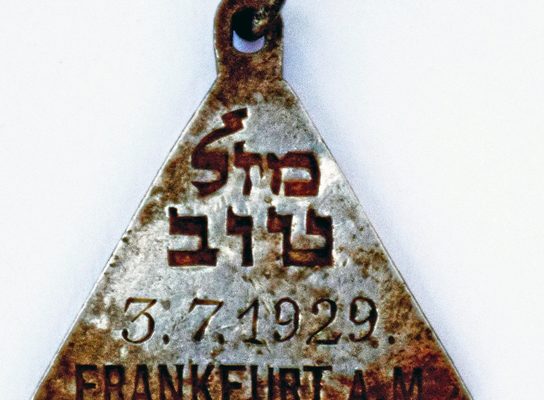Archaeological excavations at the site of the Sobibor death camp in Poland have led to meaningful revelations about the victims’ last moments.
A moving discovery was recently made during an archaeological excavation at the site of the Sobibór Nazi extermination camp in Poland. Researchers believe they have exposed the location where victims undressed and had their heads shaved before being sent into the gas chambers.
The remains of the building unearthed by the archaeologists are located on Himmel Strasse, the “Pathway to Heaven,” the path along which Jewish victims were forced to tread to the gas chambers.
The personal items found in the foundations of the building probably fell through the floorboards and remained buried in the ground until discovered this past fall.
Among the personal items were a Star of David necklace, a woman’s watch and a metal charm covered in glass with an engraving of the image of Moses holding the Ten Commandments; on the reverse side of the charm was the inscription of the Jewish prayer “Shema.”
A unique pendant, probably belonging to a girl from Frankfurt born on July 3, 1929, was also uncovered. The piece of jewelry bears the words “Mazal Tov” written in Hebrew on one side, and on the other side the Hebrew letter “ה” (God’s name) as well three Stars of David.
The Pendant’s Last Fateful Voyage
Experts at Yad Vashem, the World Holocaust Remembrance Center, together with Israel Antiquities Authority (IAA) archaeologist Yoram Haimi, revealed that the pendant discovered in Sobibór bears close resemblance to that owned by Anne Frank, who was murdered in the Holocaust and is well known for the diary she wrote while in hiding in Amsterdam.
Through the use of Yad Vashem’s online pan-European Deportation Database “Transports to Extinction,” they were able to ascertain that the pendant may have belonged to a girl named Karoline Cohn.
Dr. Joel Zissenwein, director of the Deportations Database Project, found that Cohn, born on July 3, 1929, was deported from Frankfurt to Minsk on November 11, 1941. While it is not known if Cohn survived the harsh conditions in the Minsk ghetto, her pendant reached Sobibór sometime between November 1941 and September 1943, when the ghetto was liquidated and the 2,000 Jewish prisoners interned there were deported to the death camp.
There, along the path to the gas chambers of Sobibór, the pendant belonging to 14-year-old Karoline Cohn was dropped and remained buried in the ground for over 70 years.
Additional research revealed that aside from the similarities between the pendants, both Anne Frank and Karoline Cohn were born in Frankfurt, suggesting a possible familial connection. Researchers are currently trying to locate relatives of the two families to further explore this possibility.
Many Educating Discoveries
Over the past decade, the archaeological excavations at Sobibór, under the guidance of Yad Vashem, have made several important discoveries, including exposure of the foundations of the gas chambers, the original train platform and many personal artifacts belonging to the victims.
Among the unique items are metal discs attached to charm bracelets typically worn by children. Contact information in case the child went missing was engraved on the discs.
The most recent excavations have uncovered signs of Nazi attempts to erase any evidence of the camp. One location was found to have imprints left in the ground where the Nazis had planted trees in order to conceal evidence.
“The significance of the research and findings at Sobibór grows with every passing season of excavation. Every time we dig, we reveal another part of the camp, find more personal items and expand our knowledge about the camp,” said Haimi. “In spite of attempts by the Nazis and their collaborators to erase traces of their crimes, as well as the effects of forestation and time, we enhance our understanding of the history previously known to us only through survivor testimonies. In this way, we ensure that the memory of the people killed there will never be forgotten.”
Haimi said that the pendant is another demonstration of the importance of archaeological research of former Nazi death camp sites. “The moving story of Karoline Cohn is symbolic of the shared fate of the Jews murdered in the camp. It is important to tell the story, so that we never forget,” he stated.
Yad Vashem is calling on the relatives of Karoline Cohn or any individual who can assist with details regarding her family – or that of Sophie Kollmann, who filled out Pages of Testimony in April 1978 for Richard Else Cohn and Karoline Cohn – to contact them.
By: Aryeh Savir, World Israel News





